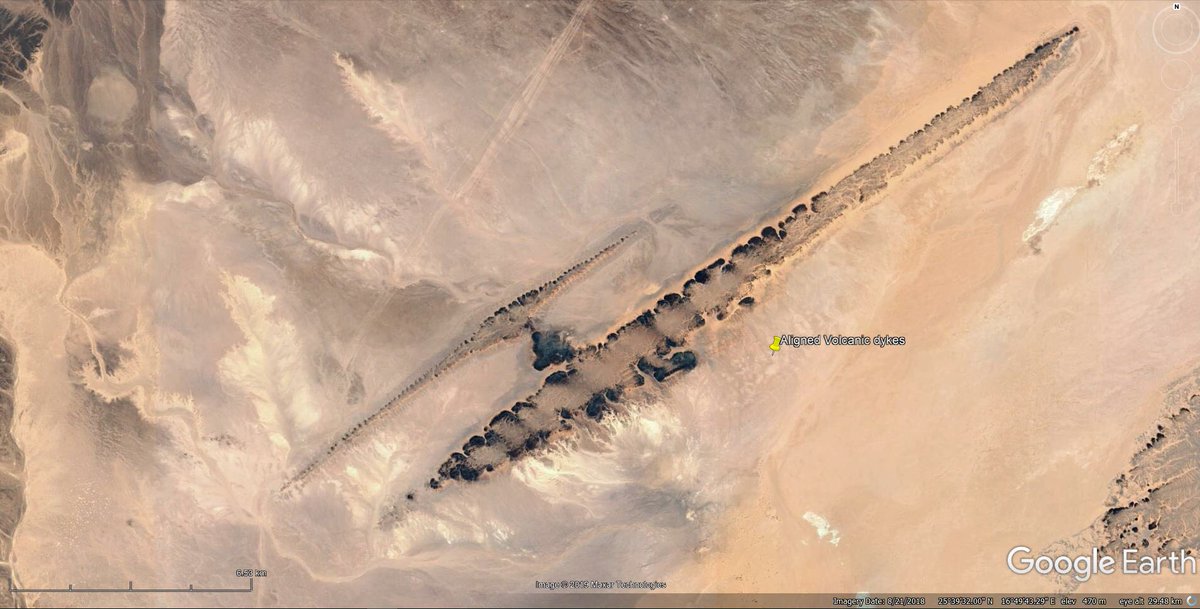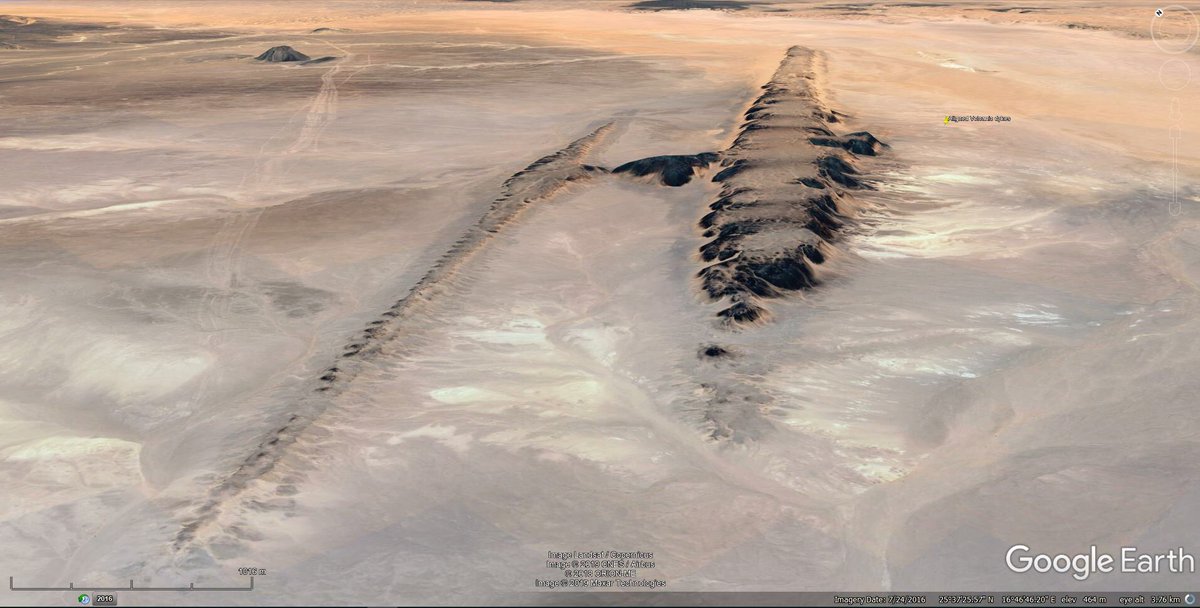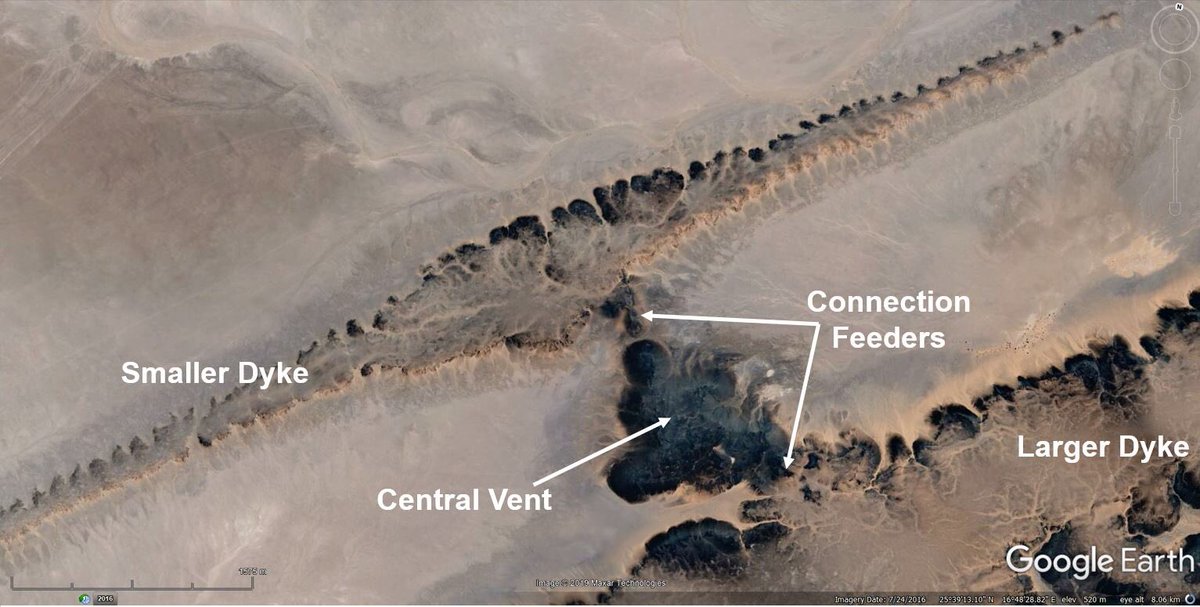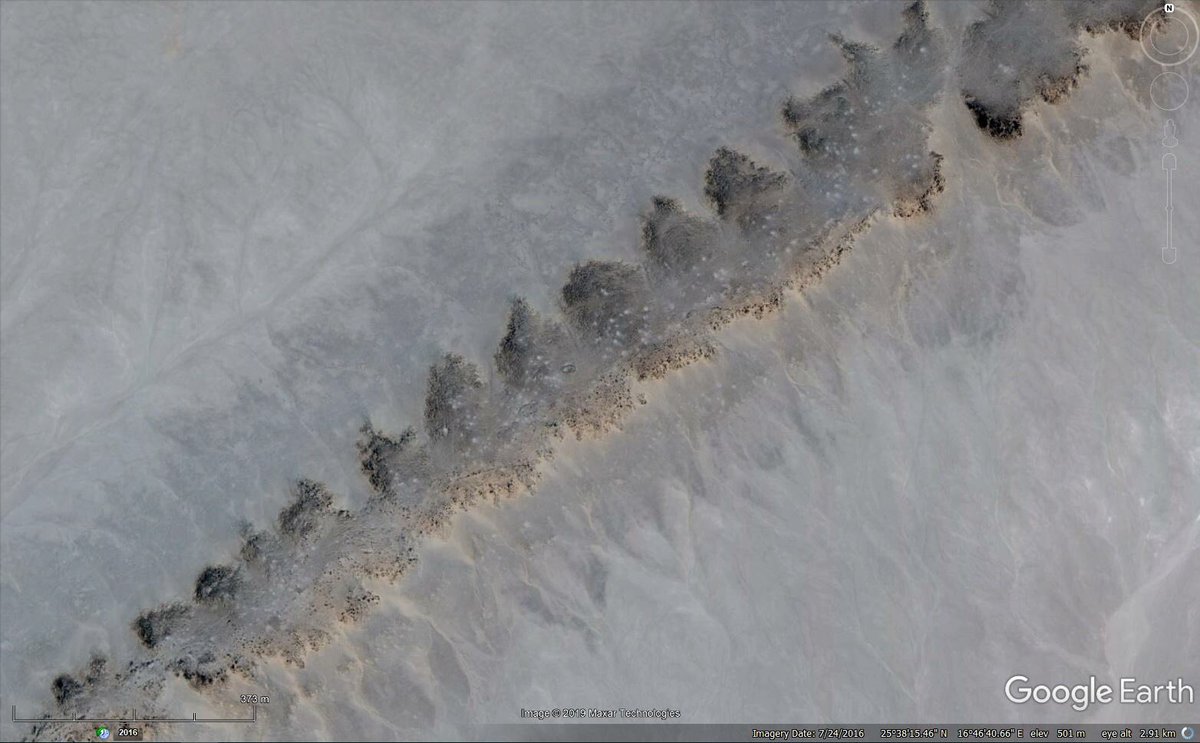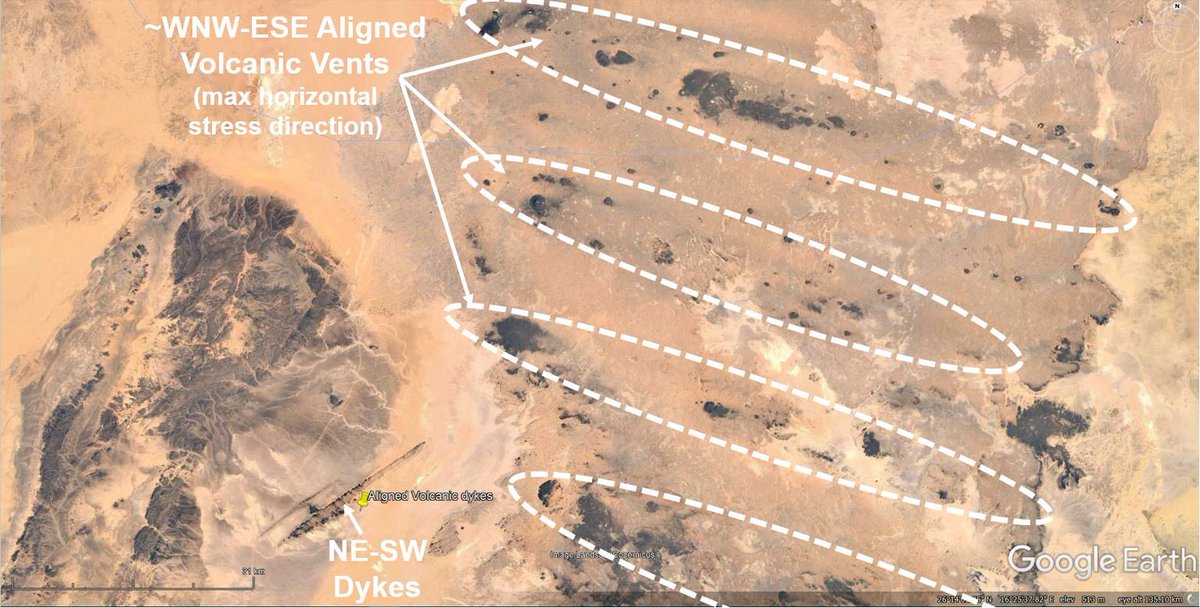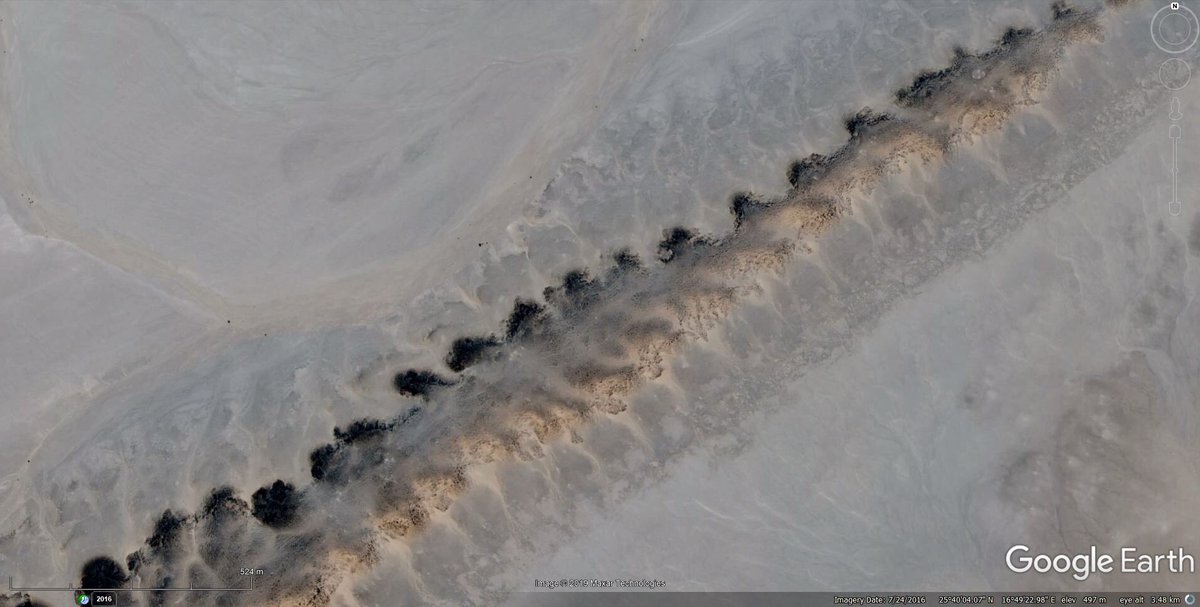Absolutely spectacular HUGE volcanic dykes in Libya!
Thread on the latest awesome geology I’ve stumbled onto in Google Earth - and a rare foray for me into ‘normal’, rather than mud, volcanism.
Paging @seis_matters @SimonHolford @MagmaFingers @janinekrippner
Thread on the latest awesome geology I’ve stumbled onto in Google Earth - and a rare foray for me into ‘normal’, rather than mud, volcanism.
Paging @seis_matters @SimonHolford @MagmaFingers @janinekrippner
These are Pliocene-Pleistocene age basalts on the SW edge of the 42000km2 Al Haruj Volcanic Province.
Location: https://goo.gl/maps/iDst86jSpxPAAGXB8
25°38& #39;52.1"N">https://goo.gl/maps/iDst... 16°48& #39;54.9"E
Location: https://goo.gl/maps/iDst86jSpxPAAGXB8
25°38& #39;52.1"N">https://goo.gl/maps/iDst... 16°48& #39;54.9"E
The 2 large parallel dykes are oriented NE-SW and are ~2.5km apart.
The larger dyke is ~23km long and ~1.5km wide at its widest part. The smaller dyke is ~13km long and ~800m wide at widest part.
The larger dyke is ~23km long and ~1.5km wide at its widest part. The smaller dyke is ~13km long and ~800m wide at widest part.
There is a central volcanic vent right between the two, with visible connection feeders into the two dykes.
These dykes are briefly described in Elshaafi & Gudmundsson (2016), who also attempt to mechanically model them: https://doi.org/10.1016/j.jvolgeores.2016.06.025">https://doi.org/10.1016/j...
These dykes are briefly described in Elshaafi & Gudmundsson (2016), who also attempt to mechanically model them: https://doi.org/10.1016/j.jvolgeores.2016.06.025">https://doi.org/10.1016/j...
The dykes are highly segmented, & appear to be made up of dozens of small, short NW-SE to E-W segments. The smaller vent is comprised of over 80 segments, with an average spacing of ~150m. The larger dyke is also highly segmented, though the segments are generally merged.
These vents are orthogonal to the ~WNW-ESE regional alignment of volcanic vents in the Al Huraj Province (& likely maximum horizontal stress direction at the time), which is also approximately the same orientation as the dyke segments & feeder to dykes from central volcanic vent.
It has been proposed that these dykes have intruded along pre-existing fault planes, as they are sub-parallel to regional faults mapped in nearby exposures.
I may be imagining it, but the segments also look like they vary in orientation along the dyke – being ~NW-SE in the thicker, central parts of the dykes and rotating to ~E-W near the tips. This could be a ‘snapshot’ of the stress reorientation that occurs near fracture tips.

 Read on Twitter
Read on Twitter
